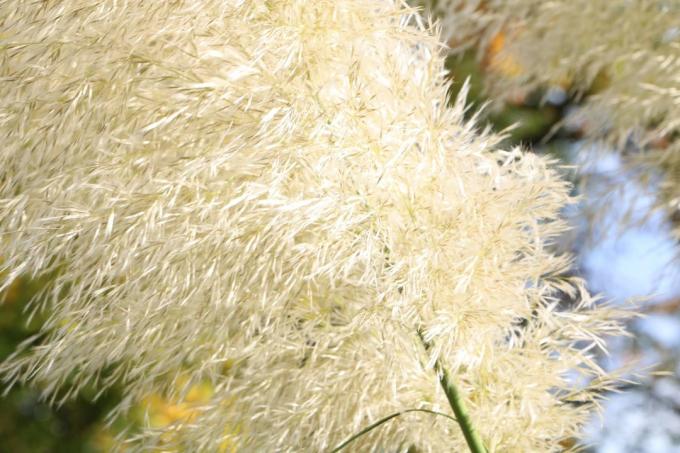
The pampas grass (Cortaderia selloana) is particularly impressive in the tub when it is in bloom. If your pampas grass is not blooming in the bucket, you need to find the cause and fix it if possible.
In a nutshell
- it is a clump-forming perennial
- blooms after a few years
- then annually
- good care required
- wrong pruning can prevent flowering
Table of contents
- Too young plants
- Wrong location
- care mistakes
- Proper casting
- Good nutrient supply
- Good winter protection
- The cutback
- frequently asked Questions
Too young plants
When the pampas grass is freshly planted, regardless of whether it is in a container or outdoors, it is still a young plant. This does not yet have the strength to quickly many blossoms bring to. The plant only develops its full splendor after a few years. Until then you have to be patient.

A notice: If the pampas grass is divided, flowering may also stop for the time being, but it should not take as long as with young plants before the grass blooms again.
Wrong location
The pampas grass originally grows in dry, permeable and sunny locations. In the garden, it prefers a similar location so that it blooms profusely. If the grass has to stand in a cold, wet and shady location, it will remain small and puny and will not flower. For plants in tubs, this means that they should be placed in the sunniest possible place, where they are protected from too much rain and cold winds.

care mistakes
The pampas grass in the tub needs good care to bloom. The most common grooming mistakes include:
- wrong watering and fertilizing
- bad pruning
- not sufficient winter protection
Proper casting
Although pampas grass is found in dry areas, it needs adequate moisture to thrive. It is important not to water until waterlogged, the soil must be permeable. This also applies to bucket culture. Due to the small volume of soil, the substrate in the pot dries out much faster than outdoors. However, the root ball should never dry out completely, which is why regular watering of the potted plants is so important. In very sunny locations, watering is even more frequent.

Good nutrient supply
Pampas grasses are not among the heavy feeders, but they are Fertilize It is true that the limited volume of soil in the pot is a reason to fertilize more than outdoors. The nutrient supply should only be moderate, but regular. Commercial fertilizers for green plants are suitable.
Good winter protection
In winter, it is less the frost that is harmful to the grass than the wetness. If it gets inside the plant, rot can occur. Since the flowers form inside the plant, they are particularly threatened by rot. So that it doesn't get that far, the tuft of leaves is used before winter tied together at the top. A mulch layer of brushwood and leaves around the plant provides additional protection.

A notice: Container plants can also overwinter in a frost-free room, even a cold greenhouse is sufficient for this.
The cutback
Pampas grass doesn't need much cut and if you mean too well, you can damage the flower. If the plant is completely cut back in the spring, the new flower buds will inevitably be removed as well. Since the grass does not form new roots, your pampas grass in the bucket will not bloom the following year.

Proper pruning:
- do not cut back in autumn
- Leaves must remain as winter protection
- completely remove the old inflorescences in spring
- otherwise only pull or cut off damaged or dried leaves from the eyrie
frequently asked Questions
Outdoors, the grass has more soil volume available. This allows it to better provide itself with moisture and nutrients. In contrast, a bucket is easier to move to another location if the pampas grass does not like the location.
Pampas grass is dioecious, meaning there are male and female specimens. However, the difference between the two sexes is not too big. However, the flowers of the female pampas grass are larger.
The color palette of pampas grass ranges from white to cream to pink. The color depends on the variety.

